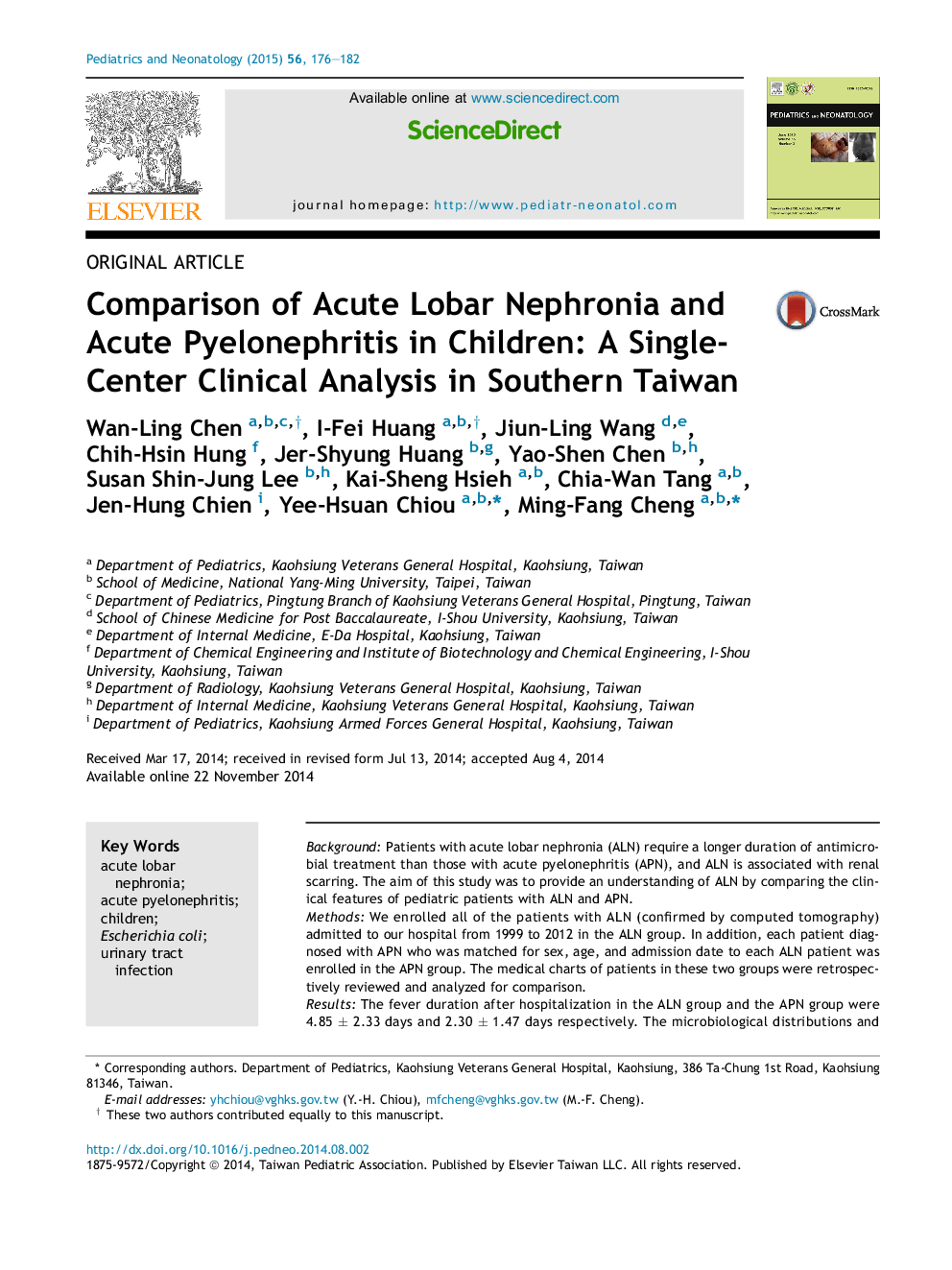| Article ID | Journal | Published Year | Pages | File Type |
|---|---|---|---|---|
| 4174980 | Pediatrics & Neonatology | 2015 | 7 Pages |
BackgroundPatients with acute lobar nephronia (ALN) require a longer duration of antimicrobial treatment than those with acute pyelonephritis (APN), and ALN is associated with renal scarring. The aim of this study was to provide an understanding of ALN by comparing the clinical features of pediatric patients with ALN and APN.MethodsWe enrolled all of the patients with ALN (confirmed by computed tomography) admitted to our hospital from 1999 to 2012 in the ALN group. In addition, each patient diagnosed with APN who was matched for sex, age, and admission date to each ALN patient was enrolled in the APN group. The medical charts of patients in these two groups were retrospectively reviewed and analyzed for comparison.ResultsThe fever duration after hospitalization in the ALN group and the APN group were 4.85 ± 2.33 days and 2.30 ± 1.47 days respectively. The microbiological distributions and the majority of susceptibilities were similar in the ALN and APN groups. The majority of clinical manifestations are nonspecific and unreliable for the differentiation of ALN and APN. The patients with ALN were febrile for longer after antimicrobial treatment, had more nausea/vomiting symptoms, higher neutrophil count, bandemia, and C-reactive protein (CRP) levels, and lower platelet count (all p < 0.05). In multivariate analysis, initial CRP levels, nausea/vomiting symptoms, and fever duration after admission were independent variables with statistical significance to predict ALN. Severe nephromegaly occurred significantly more in the ALN group than in the APN group (p = 0.022).ConclusionThe majority of clinical manifestations, laboratory findings, and microbiological features are similar between patients with ALN and APN. Clinicians should keep a high index of suspicion regarding ALN, particularly for those with ultrasonographic nephromegaly, initial higher CRP, nausea/vomiting, and fever for > 5 days after antimicrobial treatment.
